Beginning in London . . . . .
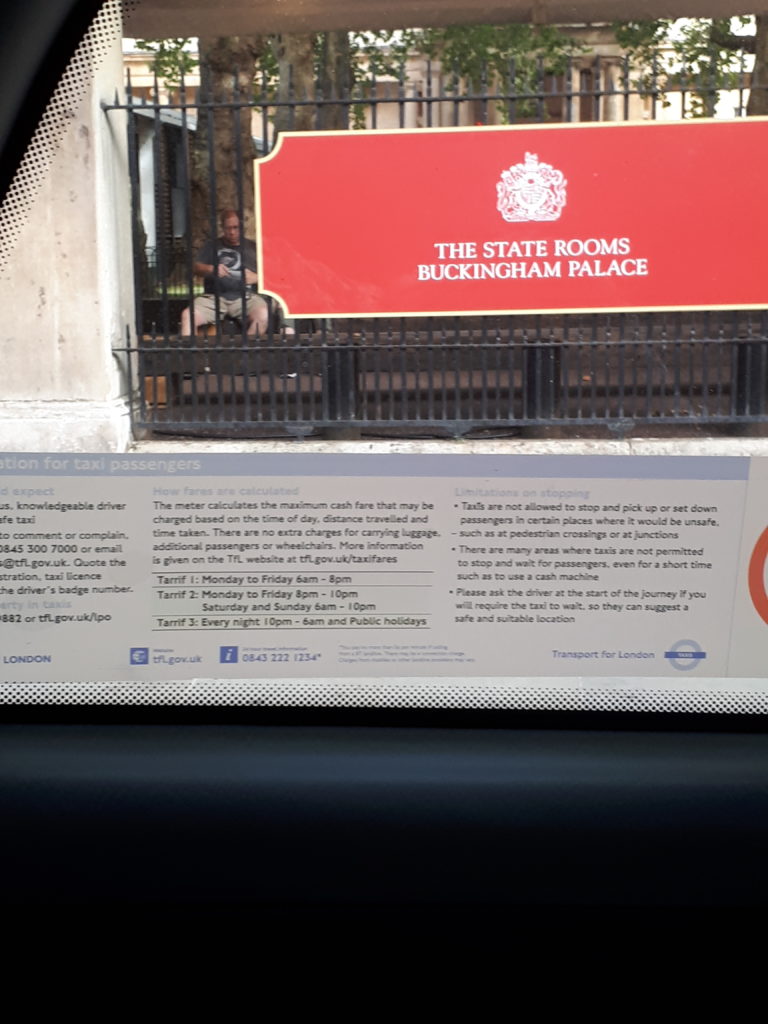

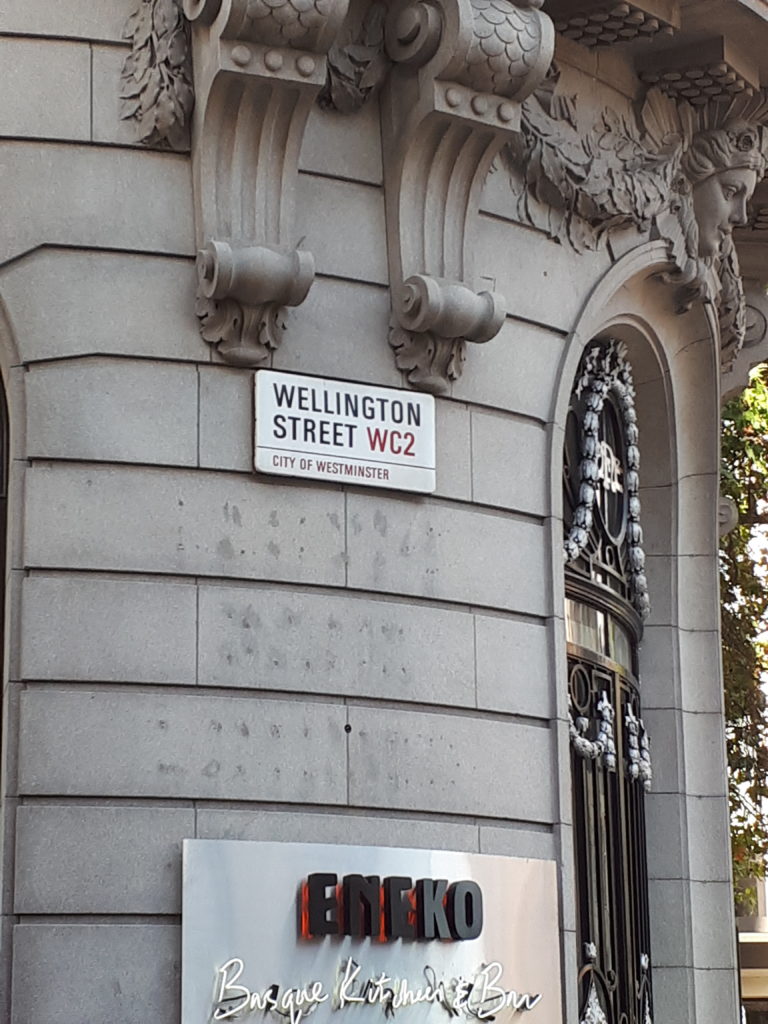
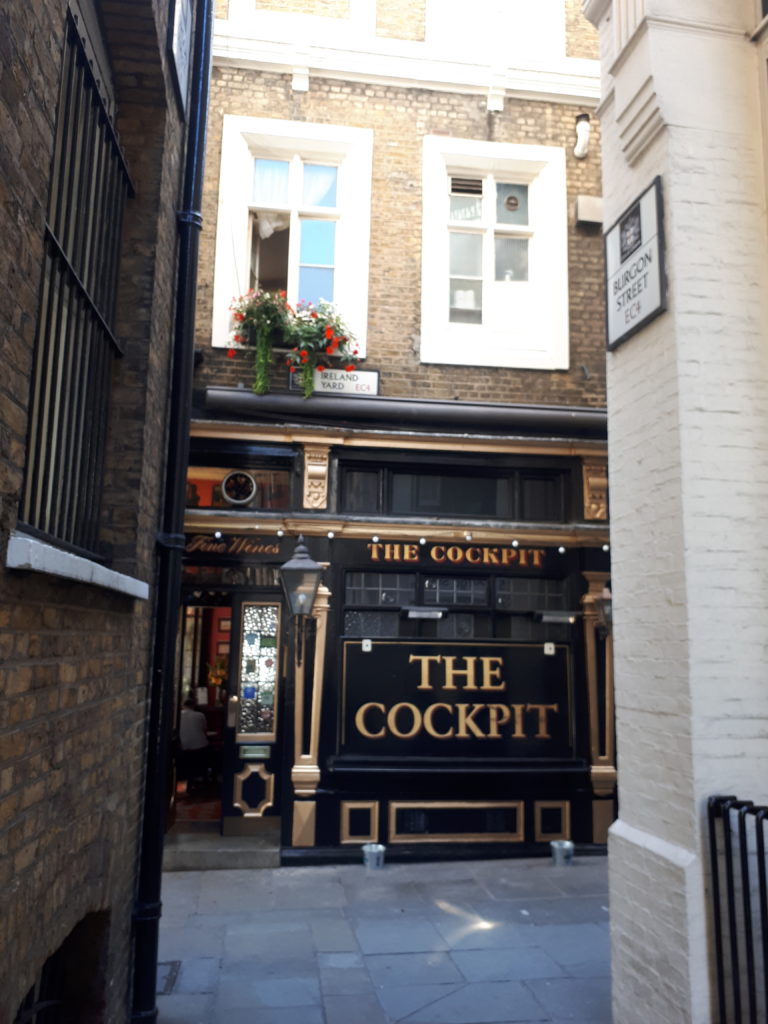
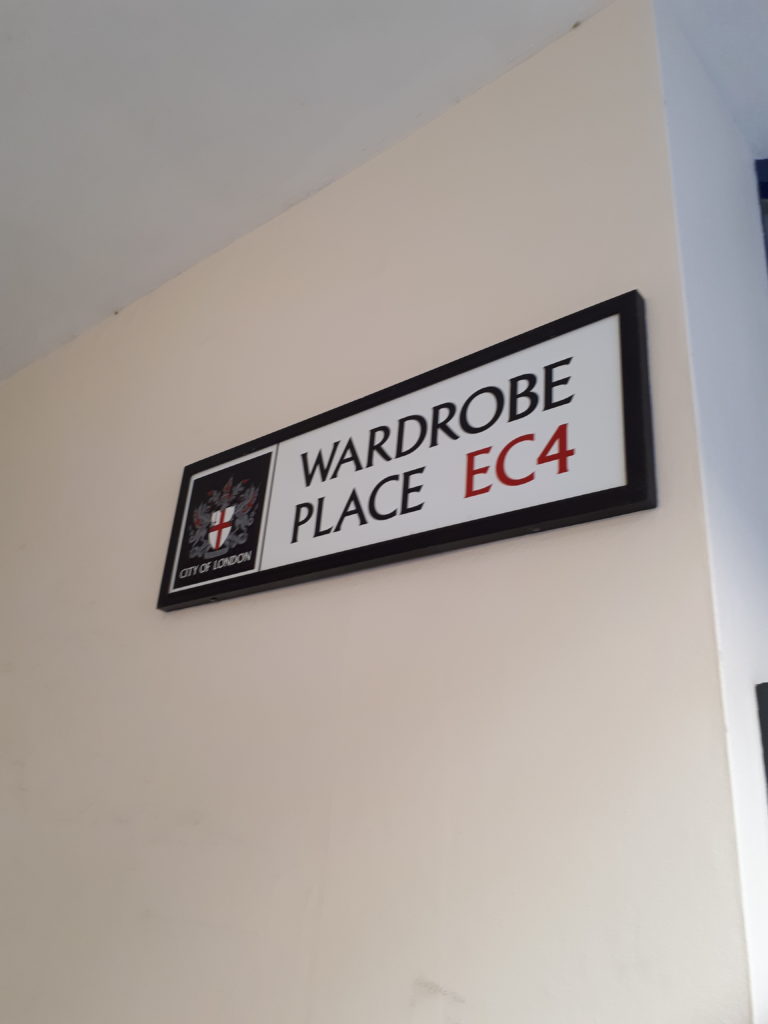
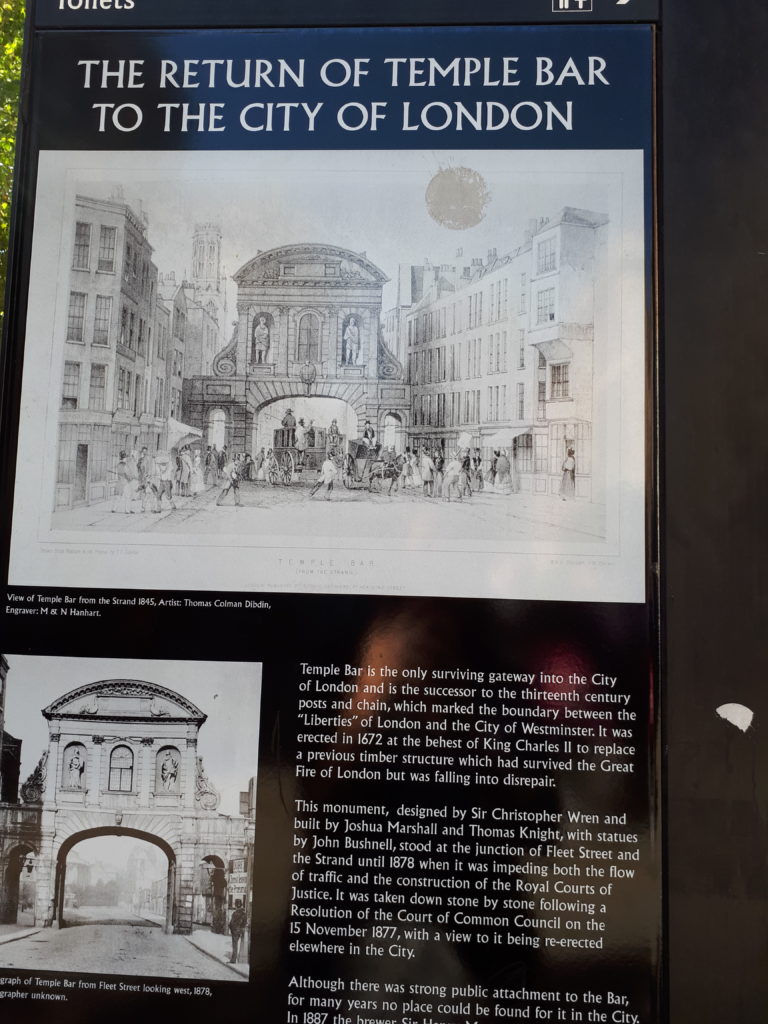
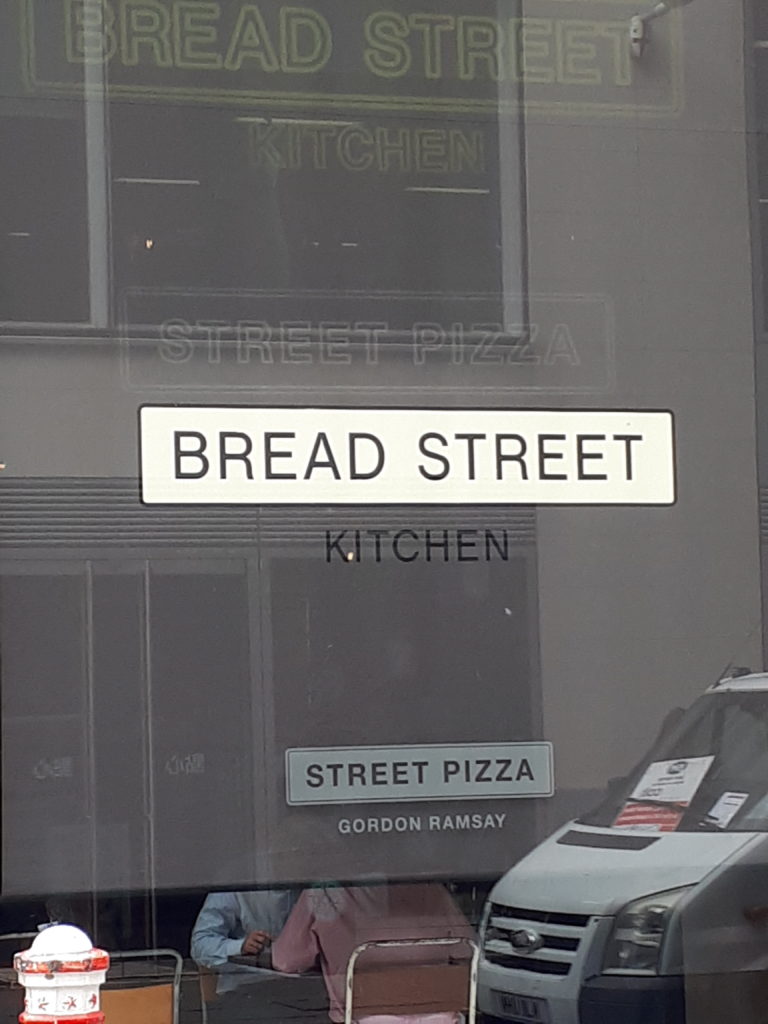
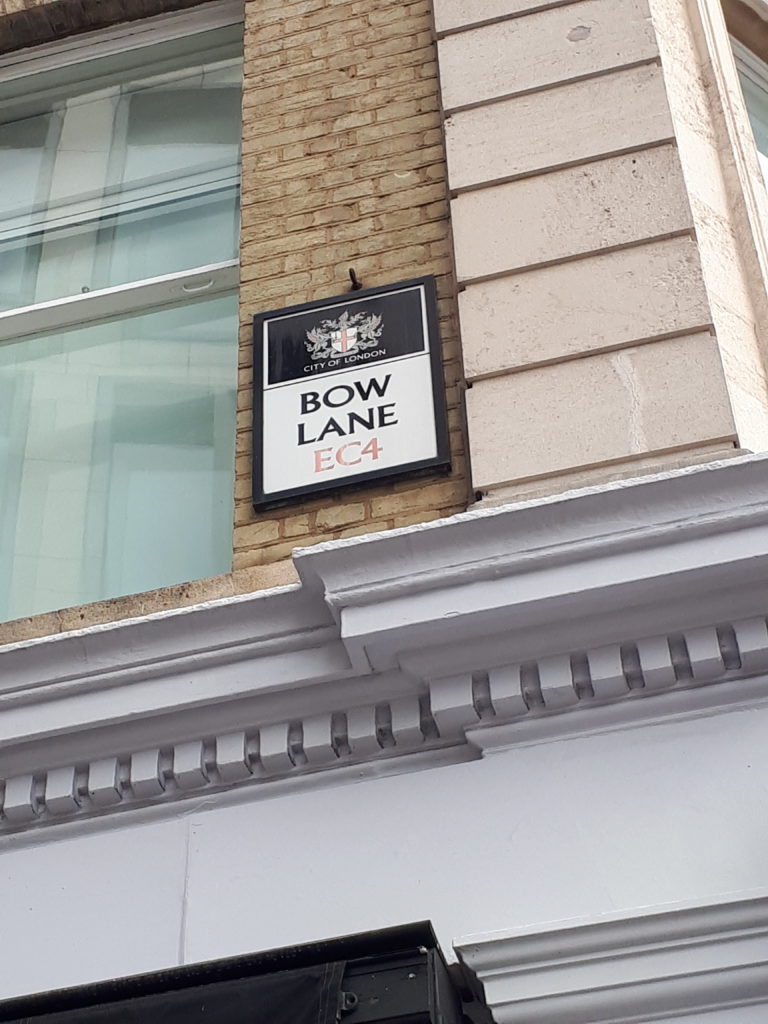
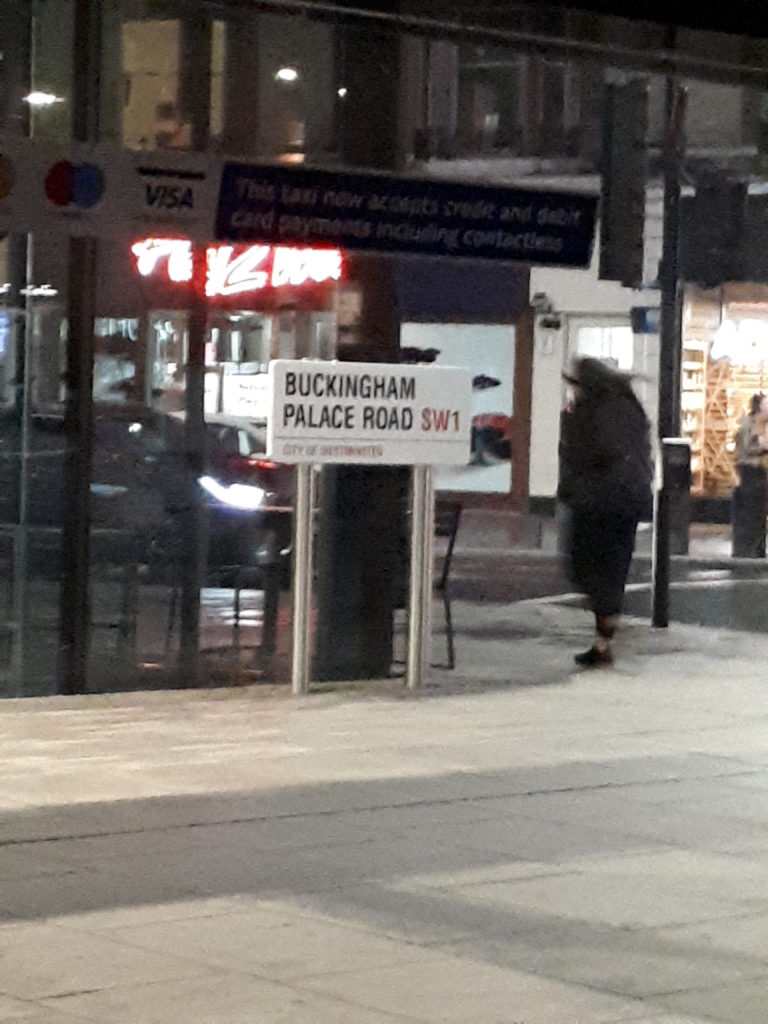
And on to Scotland . . . . .

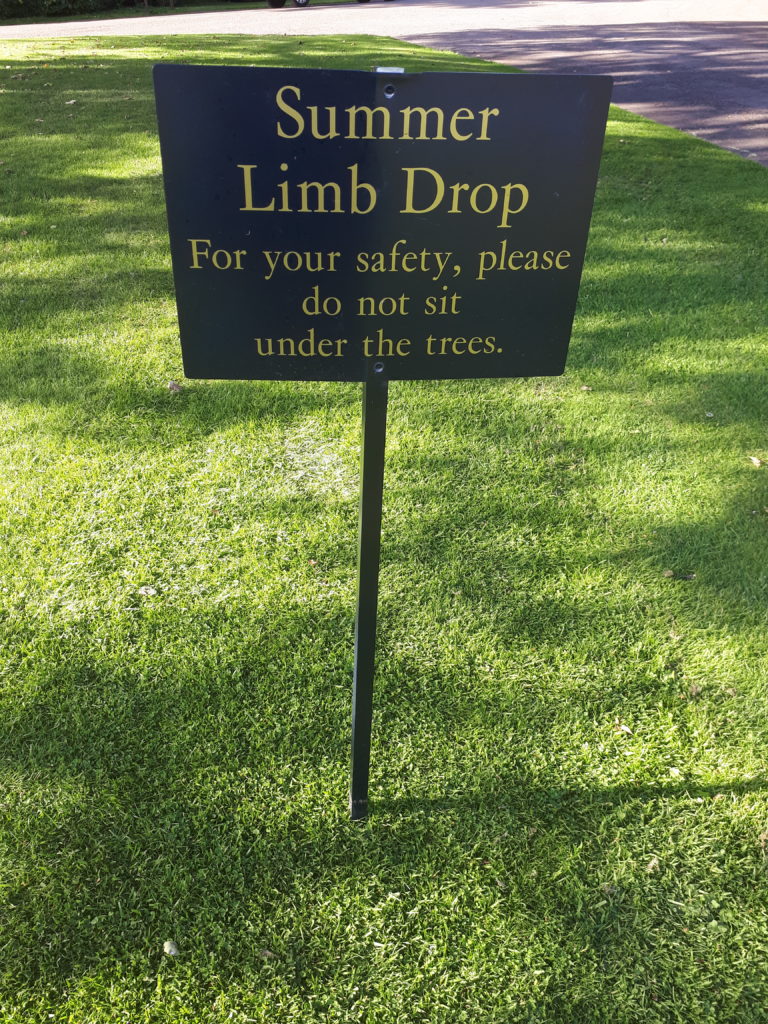

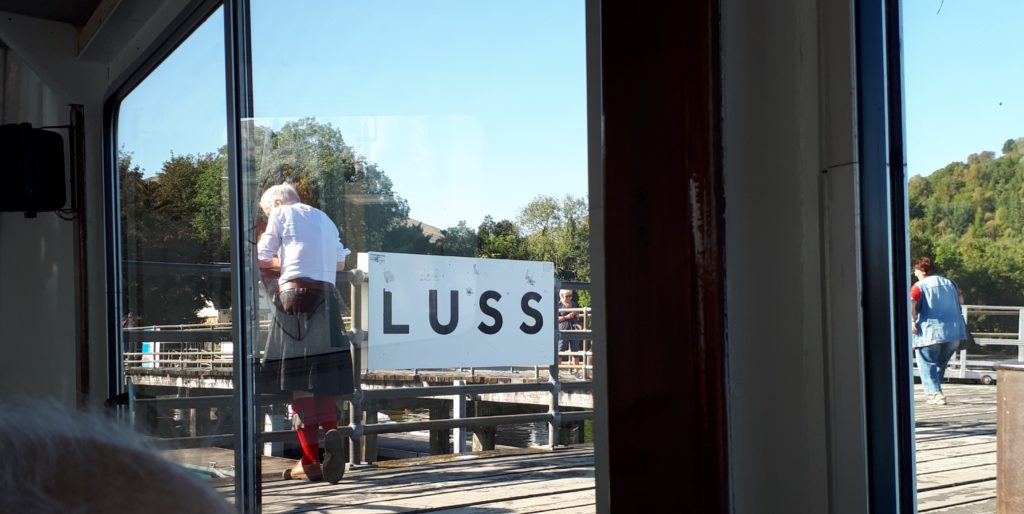

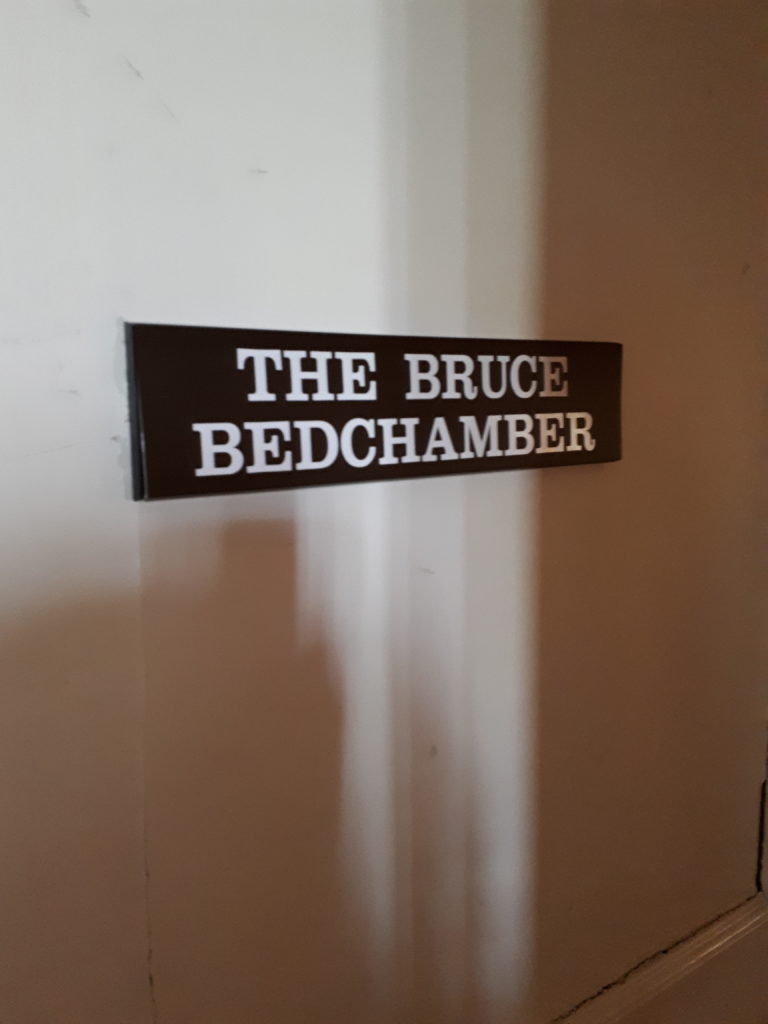
Beginning in London . . . . .









And on to Scotland . . . . .






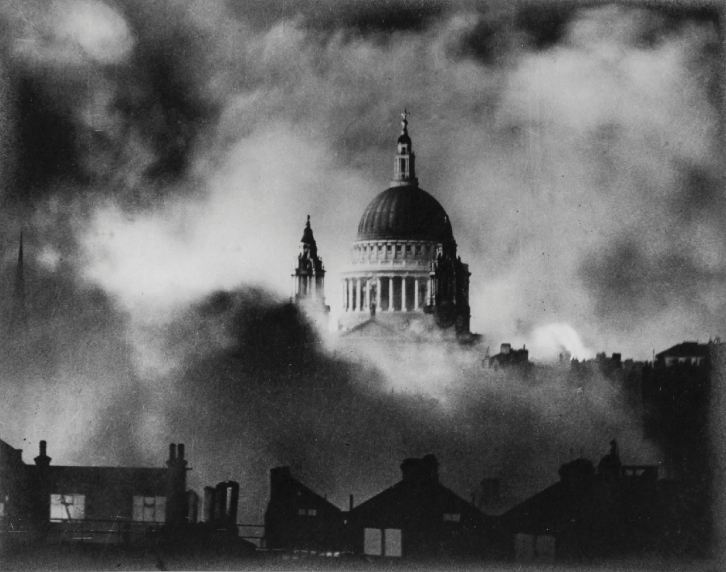
During the Blitz, Daily Mail photographer Herbert Mason was on fire watch on the roof of his office building when he witnessed the bomb destruction happening around St. Paul’s Cathedral. Not knowing whether the Cathedral would survive, Mason fetched his camera and captured this photograph of St. Paul’s, which ran in the Daily Mail on 31 December, 1940, and quickly became an enduring symbol of hope for the people of Britain.
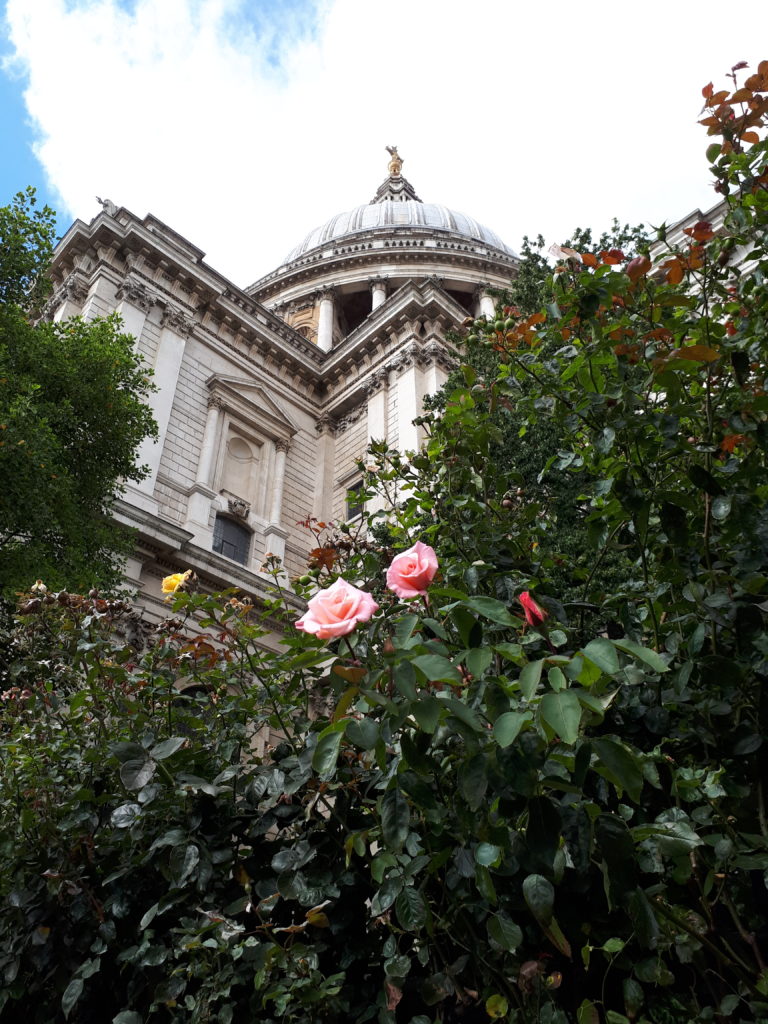
On the eve of the New Year, we at Number One London wish that each of you will experience health, happiness and the spirit of hope in the coming year.
Louisa Cornell
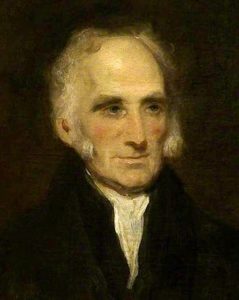
Sir Gilbert Blane
At the end of the Napoleonic Wars, Sir Gilbert Blane (1749–1843), Physician of the Fleet, argued that the incidence of insanity in the Royal Navy, which he estimated at one in a thousand, was seven times that of the general population. To explain this striking disparity, he identified head injuries, sometimes the result of black powder intoxication in the close confines of warships, together with the shock and blast experienced by gun crews. It was observed that the majority of inmates of a London asylum were seamen who had been sent there after the Battle of the Glorious First of June in 1794. It was theorized that mental illness amongst sailors exposed to combat was possibly related to the phenomenon of wind contusions or tingling, twitching, and even partial paralysis diagnosed in soldiers who had been close to the passage of a projectile or its explosion but had not actually suffered a physical wound.
Click here for a link to the firing of a rolling broadside by the HMS Victory, Nelson’s flagship. The video lasts less than a minute. Imagine hours of this from the inside of a ship. Or imagine seeing this coming at you from another ship in the heat of battle.
During the nineteenth century naval doctors acting as advocates for their patients used mental illness as a criminal defense. Captain G. Scott of the Stately wrote to Nelson on the recommendation of Dr John Snipe to request that the application for a court martial for John Burn, a royal marine, who had struck an officer, be withdrawn on the grounds that the offence was occasioned by insanity. Implicit in this defense was the idea that sailors who had experienced the effects of brutal battles could have their reason disturbed and hence not be fully responsible for their actions.
In 1808, the navy’s lack of provision for clothes for sailors confined in places like Bethlem meant some had only a blanket to wear. Monies had to be dedicated specifically to the care of specific sailors. Situations such as this, once reported to the admiralty, were part of the impetus to establish facilities under the control of the navy and dedicated to the care of those sailors suffering from wounds that could not be seen.
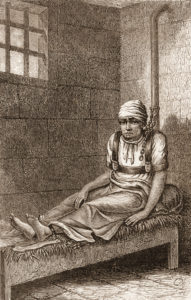
The number of sailors suffering from mental illness was sufficient for the Royal Navy to make special provision for their treatment. Between 1794 and 1818, for example, 1083 officers and ratings were admitted to Hoxton House Asylum, which had been founded in 1695 with Chatham Chest funds to treat naval and government cases. Most of these admissions were then transferred to the Bethlem Hospital at Moorfields for further care, though 364 were regarded as cured. As a Crown institution, Bethlem was obliged to admit patients referred by the Sick and Wounded Seamen’s Office and the War Office.
However, from its opening in 1753,the Royal Hospital at Haslar had admitted psychiatric patients and subsequently Rear Admiral Garrett was reported as saying that a seaman who has lost his reason in the service of the Crown should receive the love and attention on a scale not less than a seaman who has lost a limb in the same cause. In August, 1818 the navy opened a Lunatic Asylum at Haslar. In 1819, wards for soldiers were established at the asylum at Chatham. By the 1820s the emphasis was on moral treatments and patients were encouraged to work in the gardens, take exercise, and undertake tasks in the hospital. Case notes showed that most of those admitted were either psychotic or severely depressed, rather than troubled by the acute effects of battle; most were regarded as incurable.
The naval hospital at Great Yarmouth had been constructed between 1809 and 1811 to treat the sick and wounded of the North Sea Fleet. The Royal Naval Hospital in Yarmouth was also a major hospital for naval lunatics. Taken over by the army in 1844, it housed a Military Lunatic Asylum until the outbreak of the Crimean War when the Admiralty re-acquired the building.
The advantage to facilities established and run by the military were:
Some things to remember:
For records and more insight into the admission of soldiers and sailors into military lunatic asylums check out the section on naval asylums at the British National Archives.
by Victoria Hinshaw
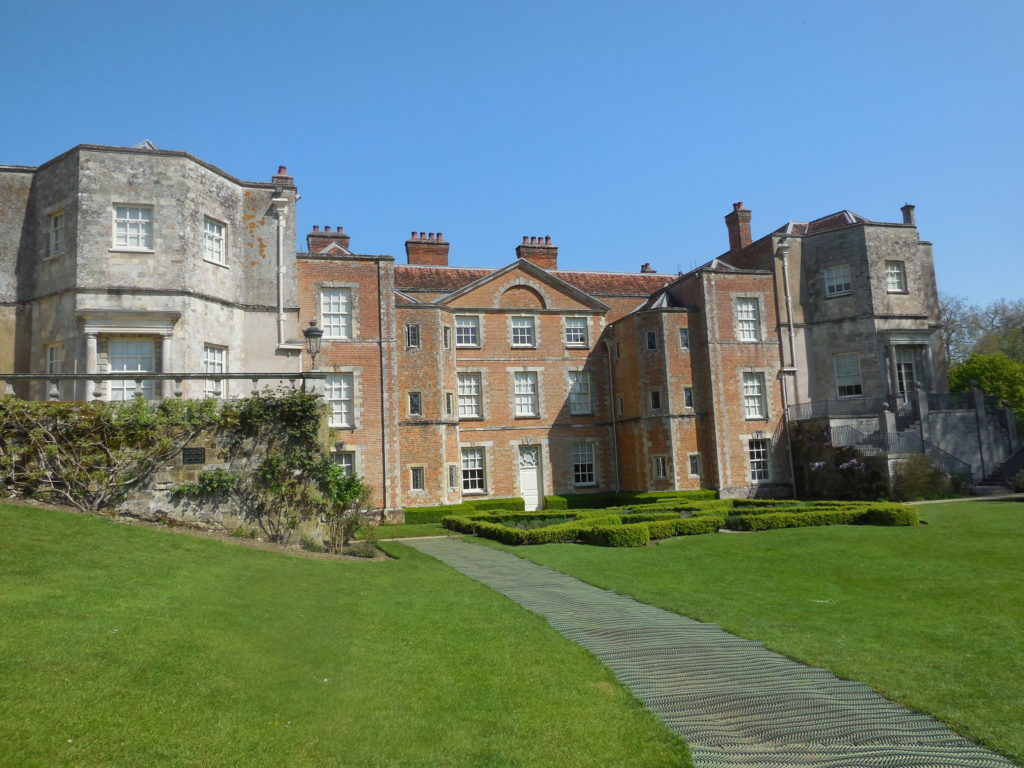
Tucked away in Hampshire is a stately home I have long wanted to visit for several reasons. The estate encompasses the ruins of an Augustinian priory (the title Abbey was added later — and incorrectly, according to the NT); the gardens are renowned; and Rex Whistler painted some famous trompe d’oeil decorations in the drawing room.

During the course of my research with Kristine at the various Wellington archives, we were able to steal off for the day to meet with fellow authors Alicia Rasley and Nonnie St. George. Of course the best reason for the visit was the opportunity to connect with friends from many a meeting of The Beau Monde…and fellow writers one and all. If we missed any of the relevant treasures of the estate, it was because we were so full of conversation catching up on our latest activities.
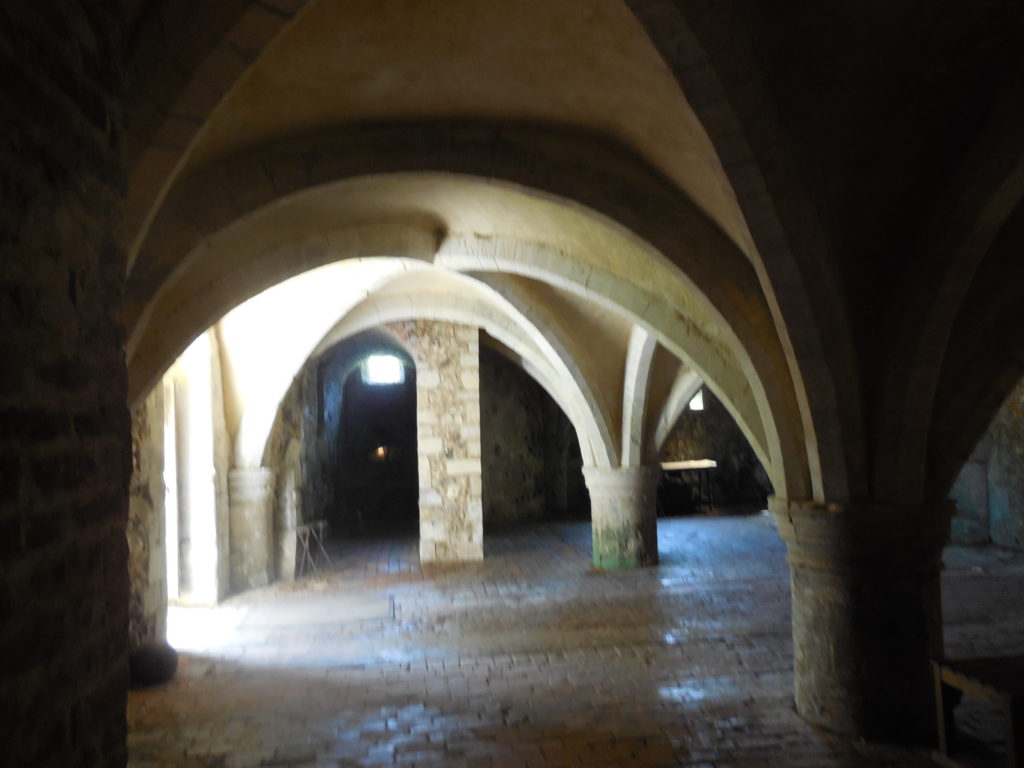
First stop was the cellarium, a remnant of the original priory building, dating from the 13th century.
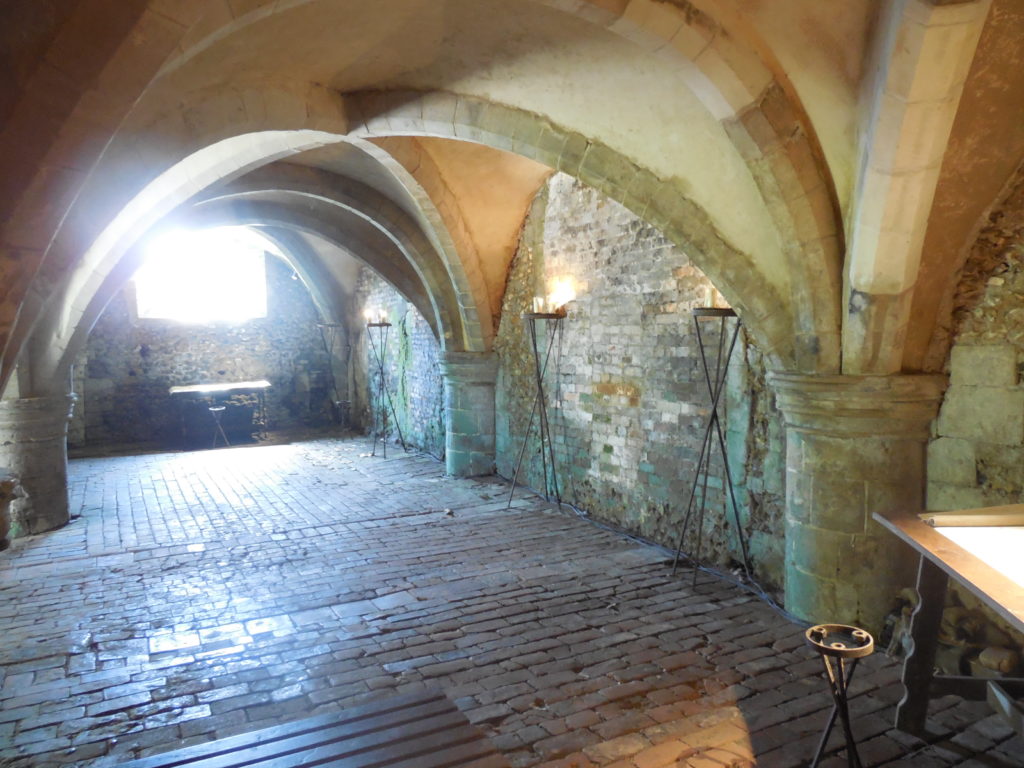

The morning room was the perfect place to enjoy reading and conversing. It was a favorite spot for Maud Russell, the lady responsible for the current appearance of the estate.
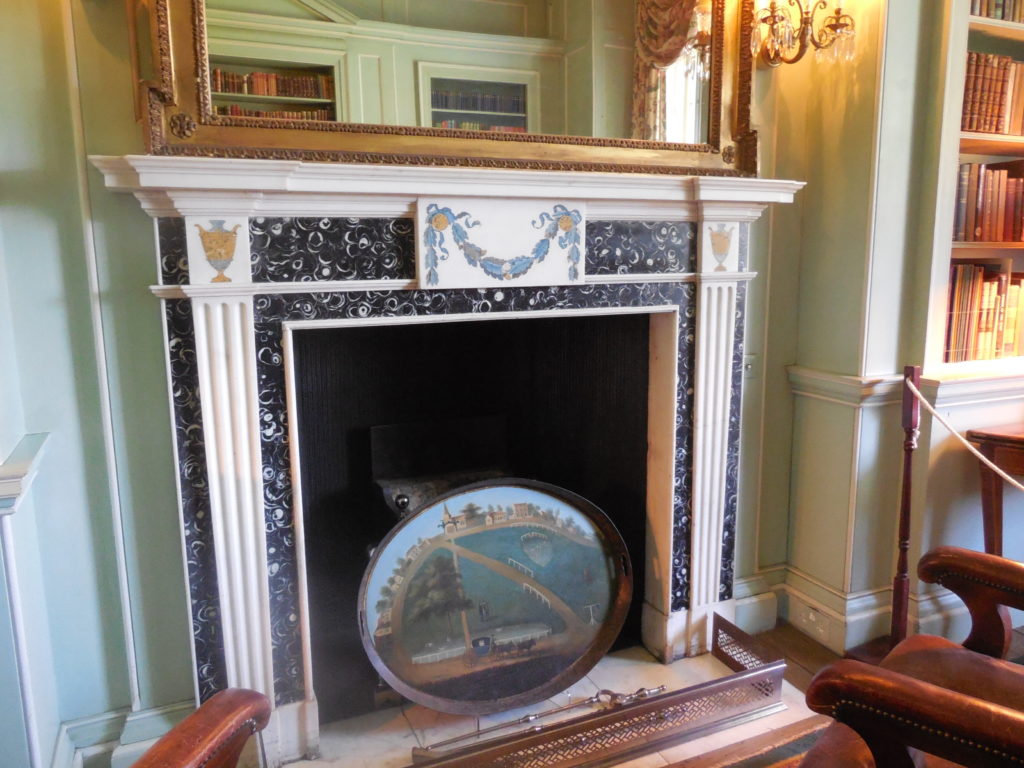
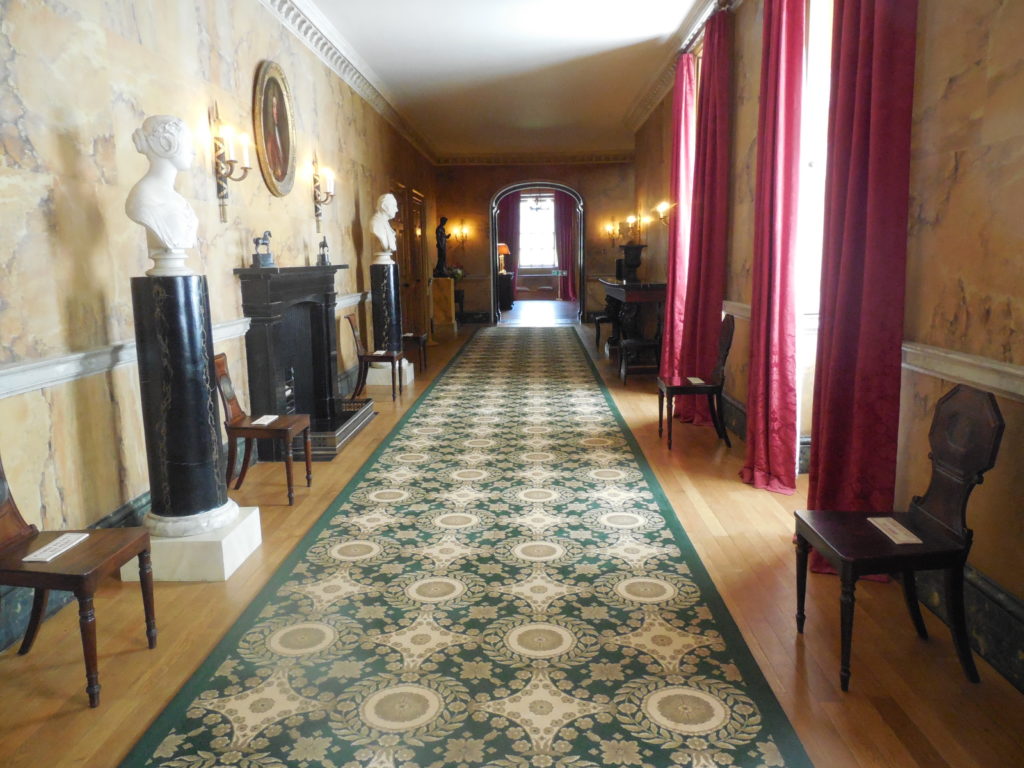
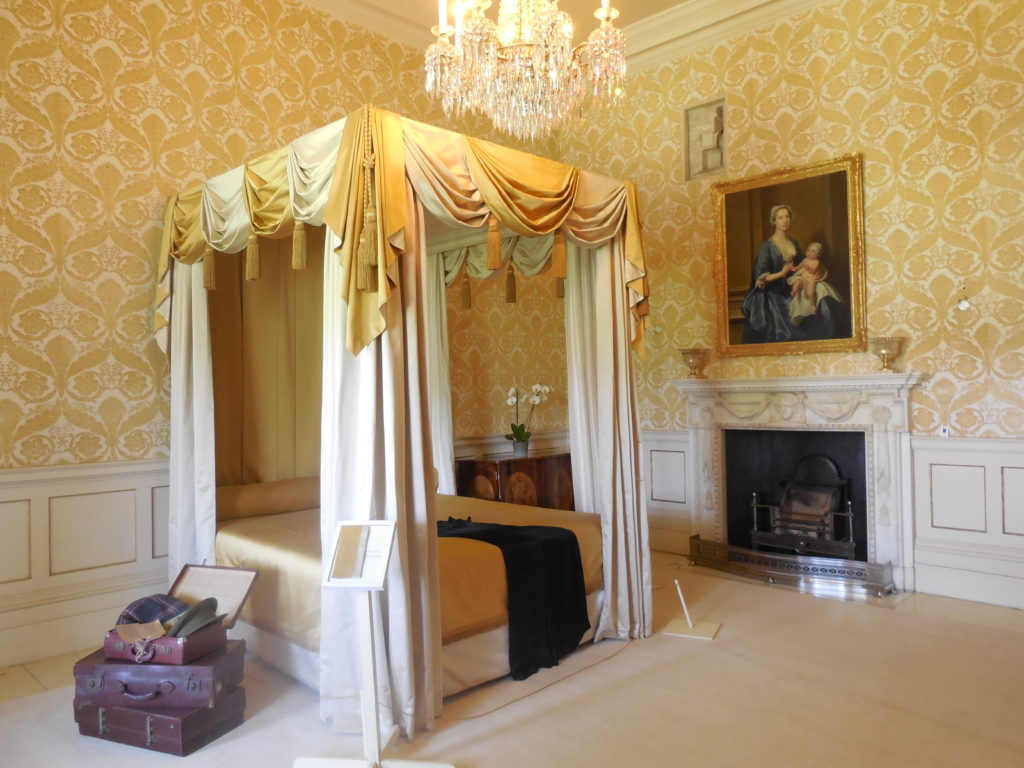
In this handsome bedchamber, several remnants of the old priory building have been left uncovered.
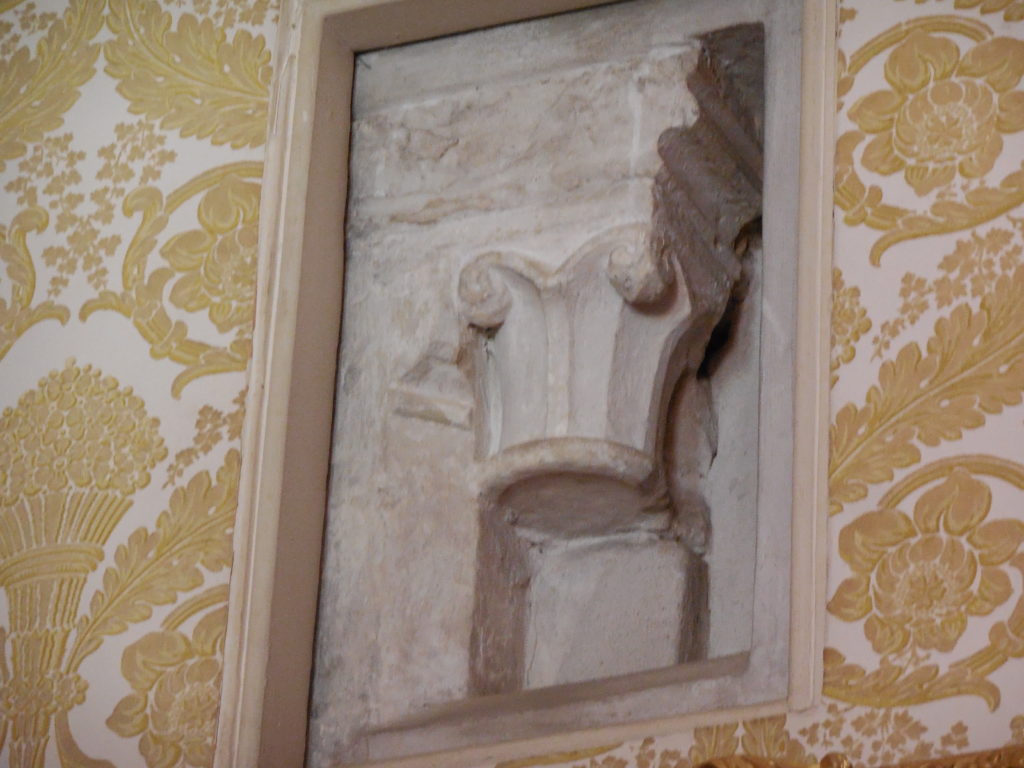
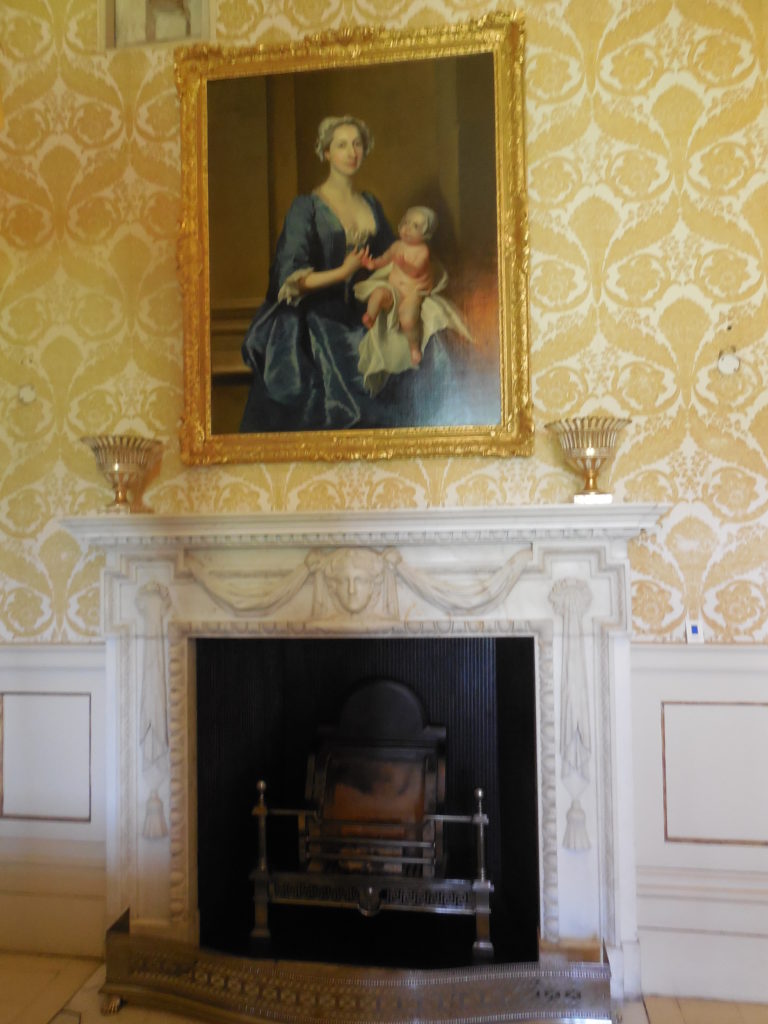
The painting over the fireplace is Johanna Warner, Mrs. Robert of Bedhampton and her daughter, Kitty, later Mrs. Jervoise Clarke, 1736; by Joseph Highmore.
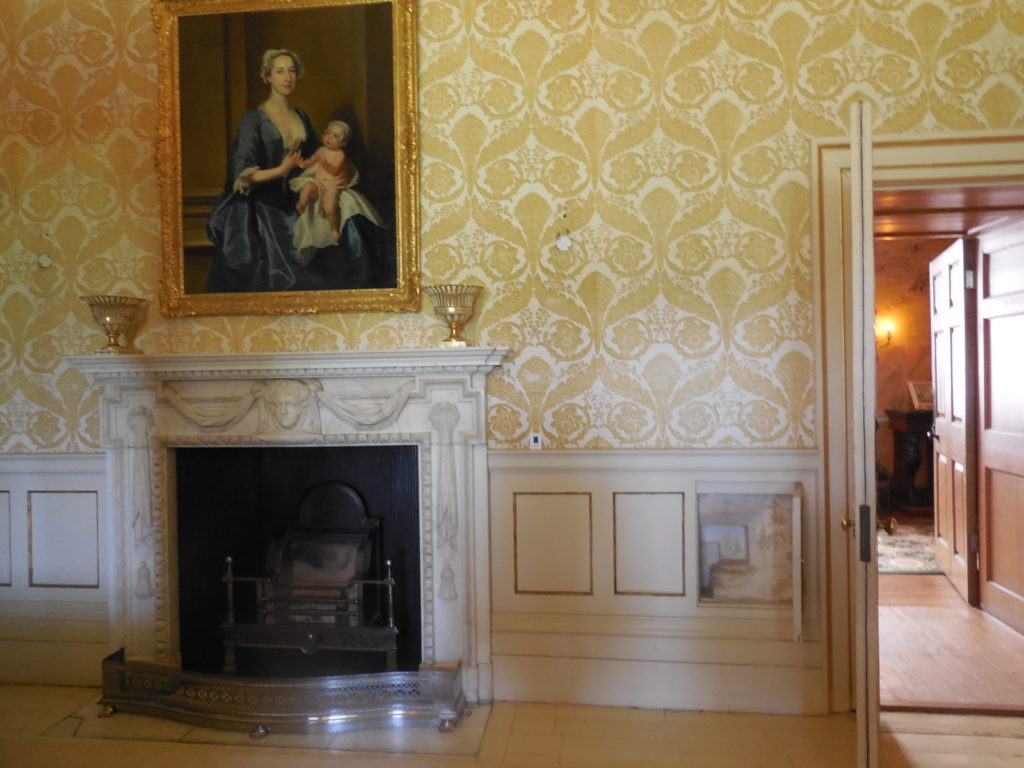
To the Right of the fireplace is another of the secret doors which show the old structure behind the walls of the current house.
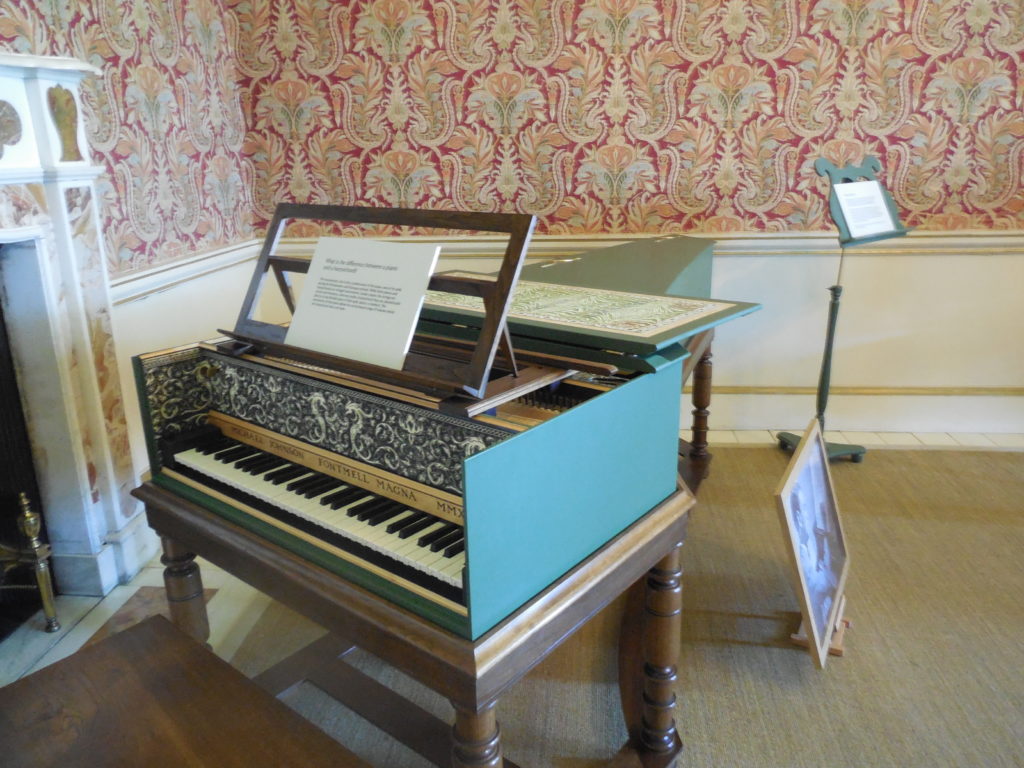
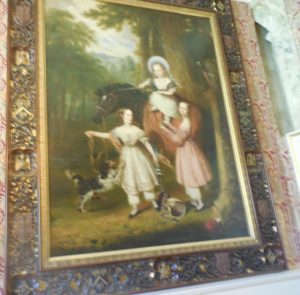
The charming picture above (and below) is The Challoner Daughters by John Roger Herbert, RA (1810-1890), described as “three little girls in a woodland scene with a pony and dogs.”
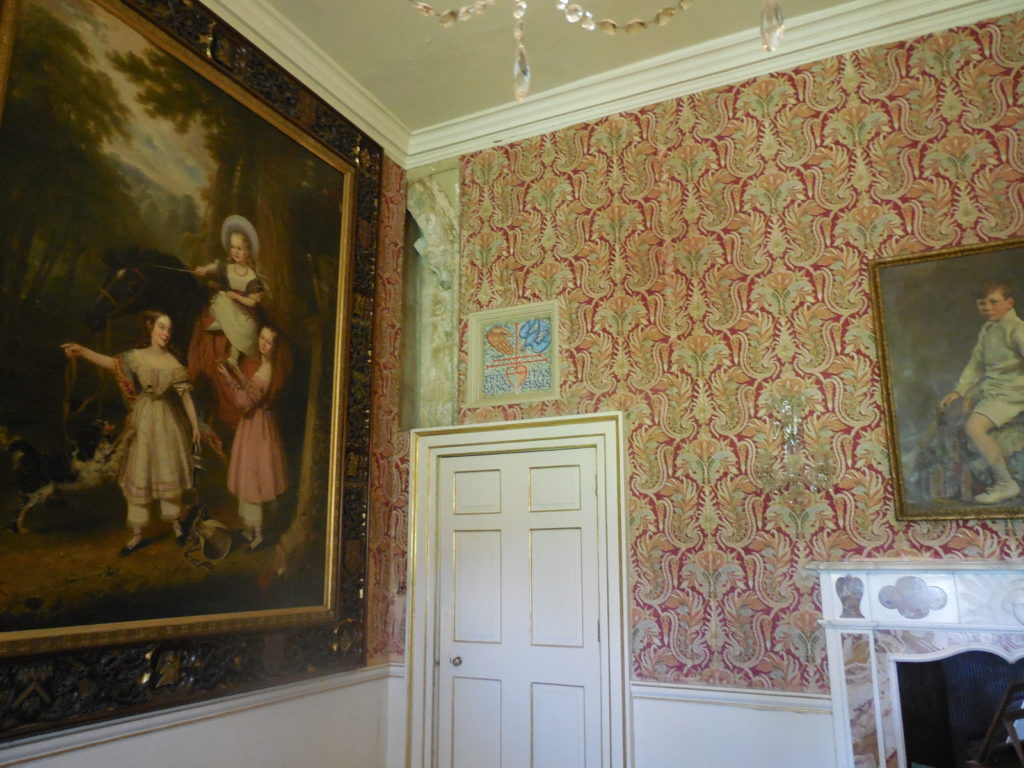
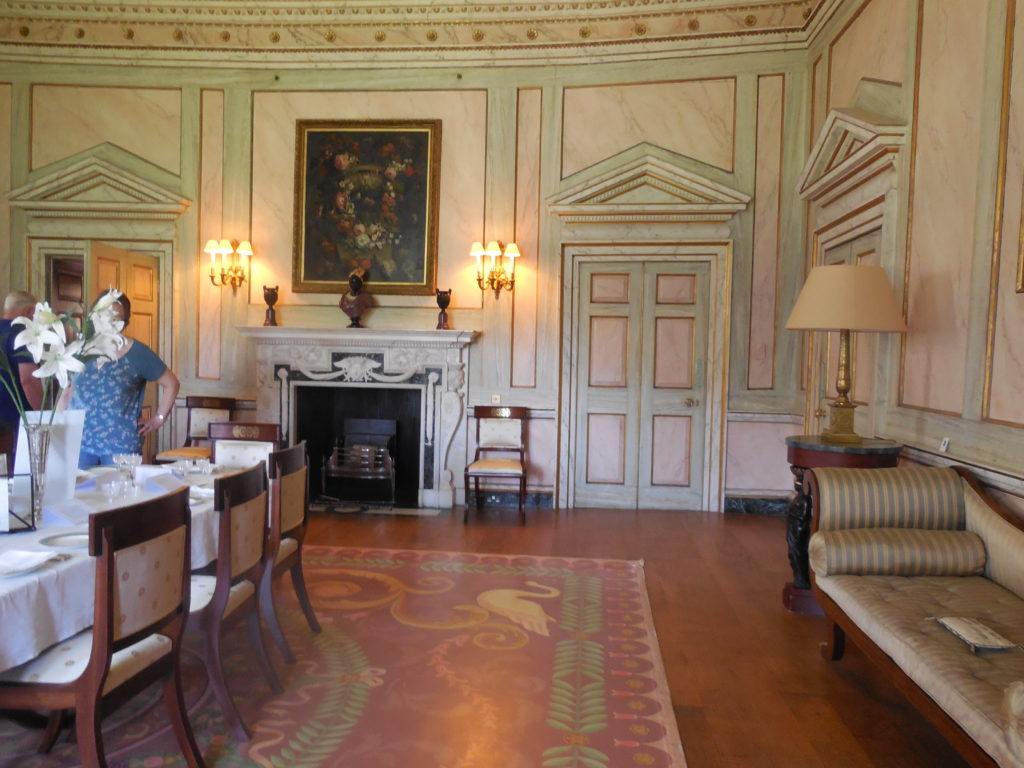
The dining room was a popular venue for gatherings of the Russells’ artistic and intellectual friends in the 1930’s.
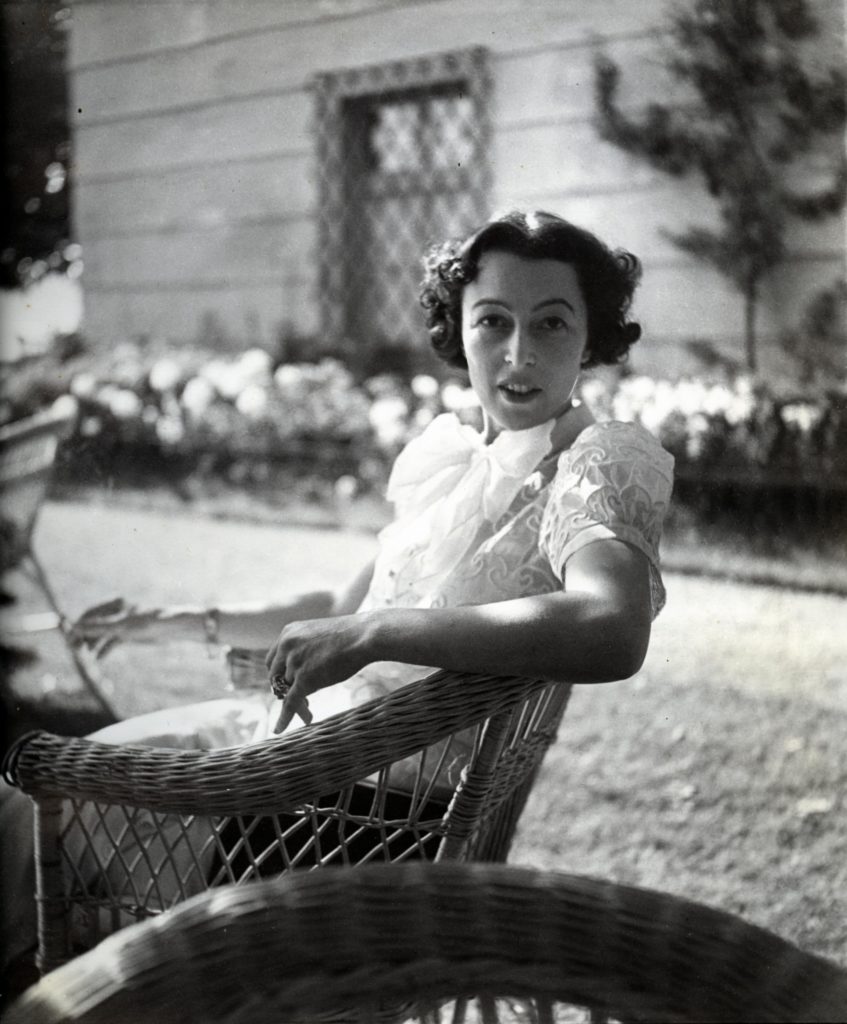

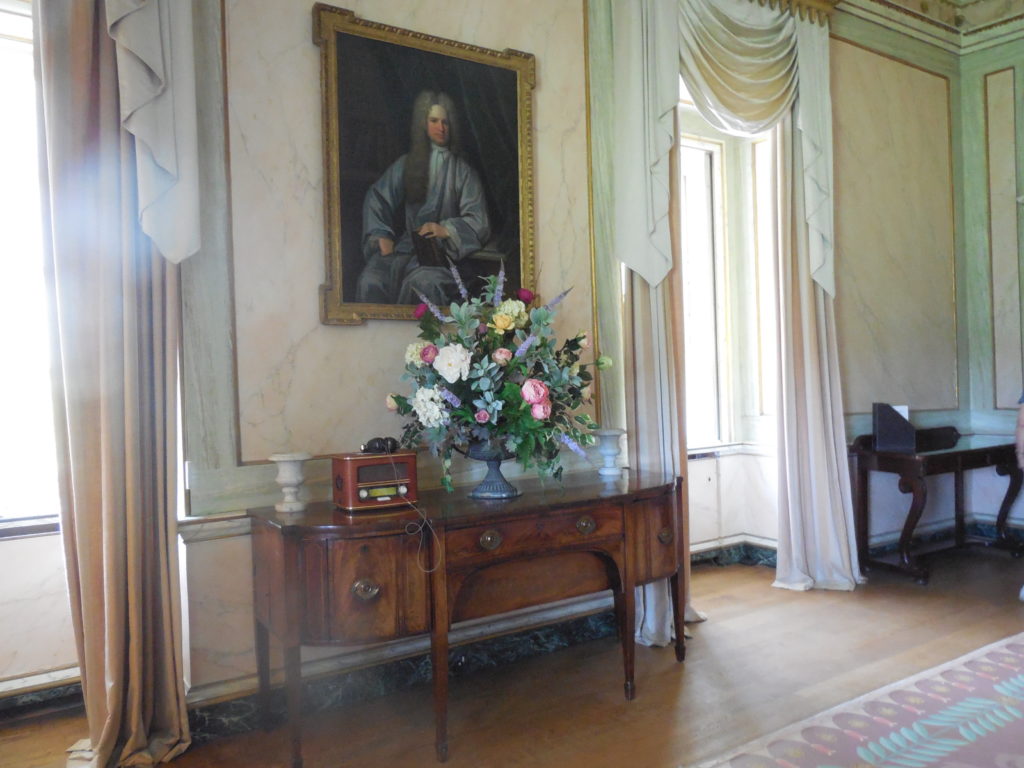

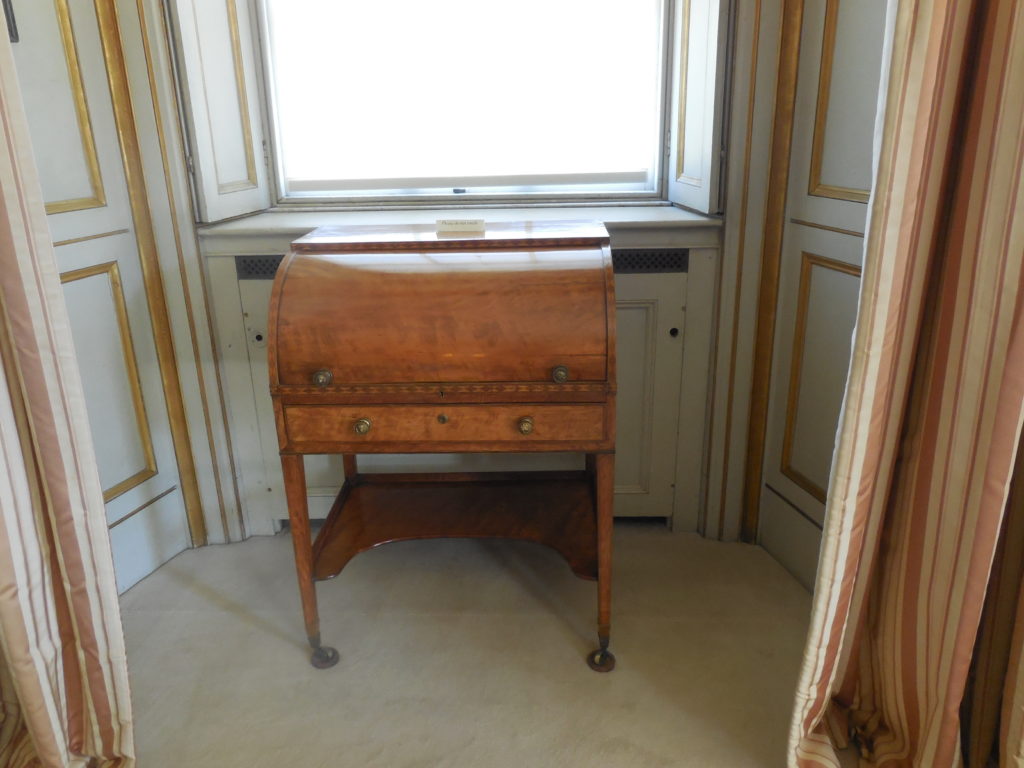

The piece d’resistance of the Montisont House: The Whistler Room. Maud Russell commissioned artist Rex Whistler to decorate her drawing room in the late 1930’s.

Whistler (1905-1944) painted many murals and trompe d’oeil works in England, including the famous murals in the restaurant of the Tate Britain, ad the fantasy landscape at Plas Newydd, from which the self-portrait below is a detail.
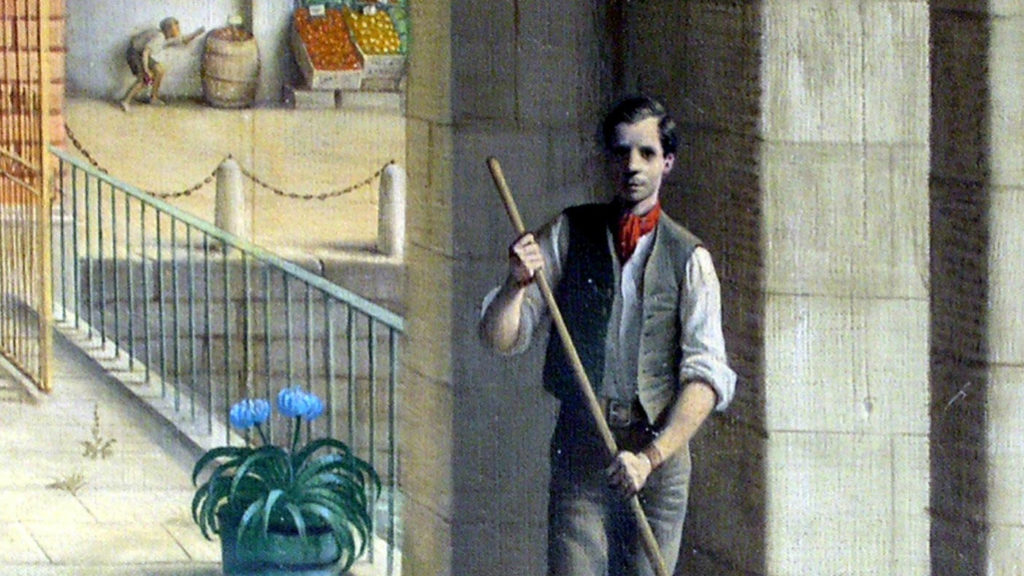
In addition to his renown as an artist, Whistler was a member of the set known as the “bright young things” between the wars, a friend not only of Mrs. Russell, but of Lady Caroline Paget, Cecil Beaton, and many others. Whistler died fighting in Normandy in 1944.
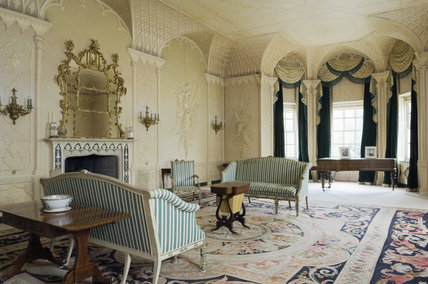
Above three pictures ©National Trust. All others in this post were taken by me.
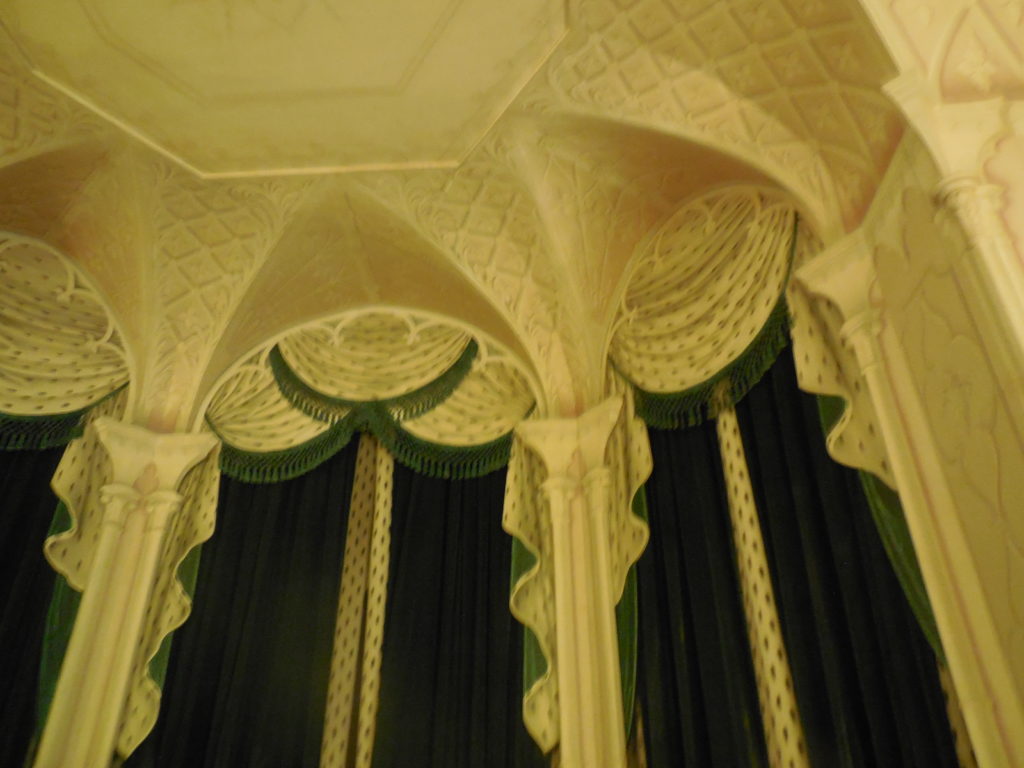

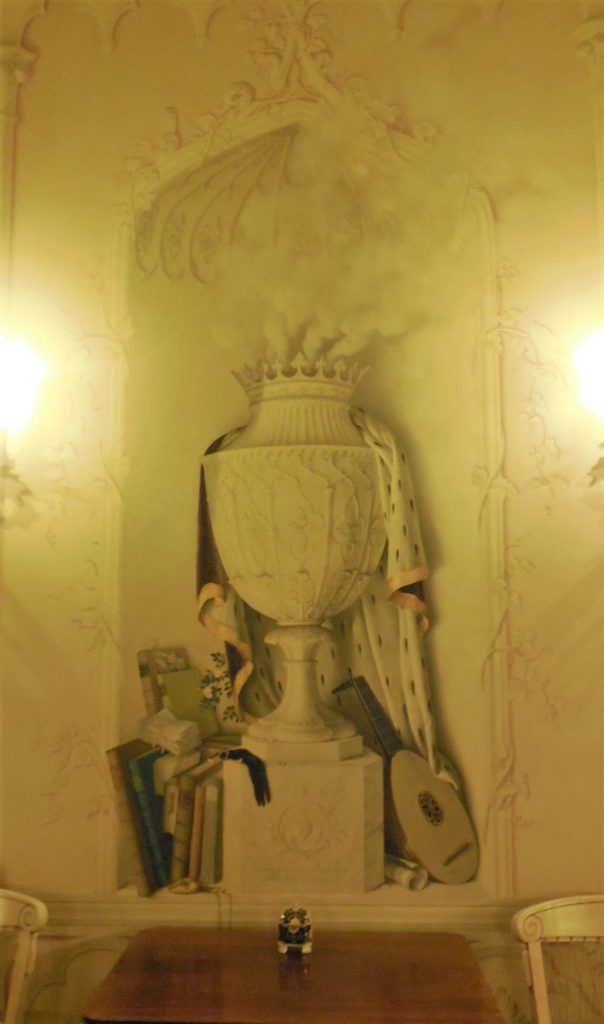
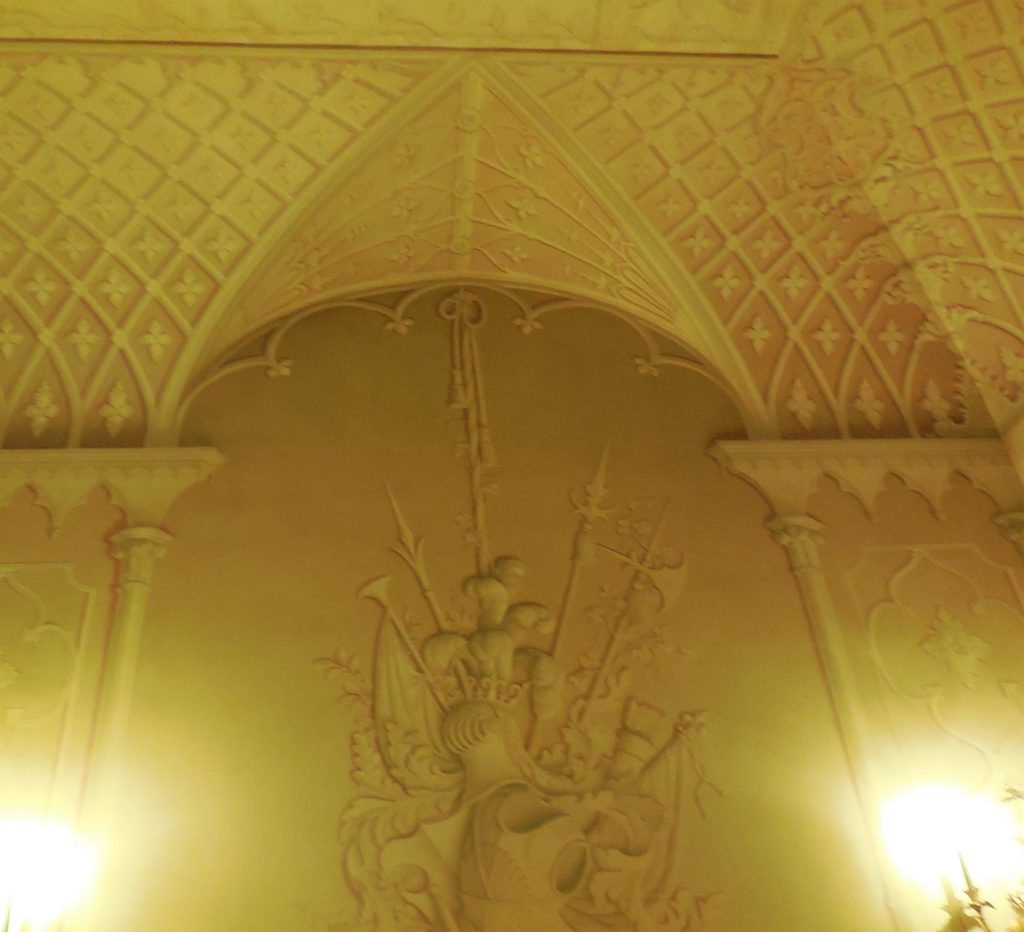
In May, we were a little early for the roses in the NT Rose Collection of pre-20th Century species. But we thoroughly enjoyed the beautiful font (spring) and stream which feeds into the River Test, as well as the many families enjoying picnics and games on the lawns.
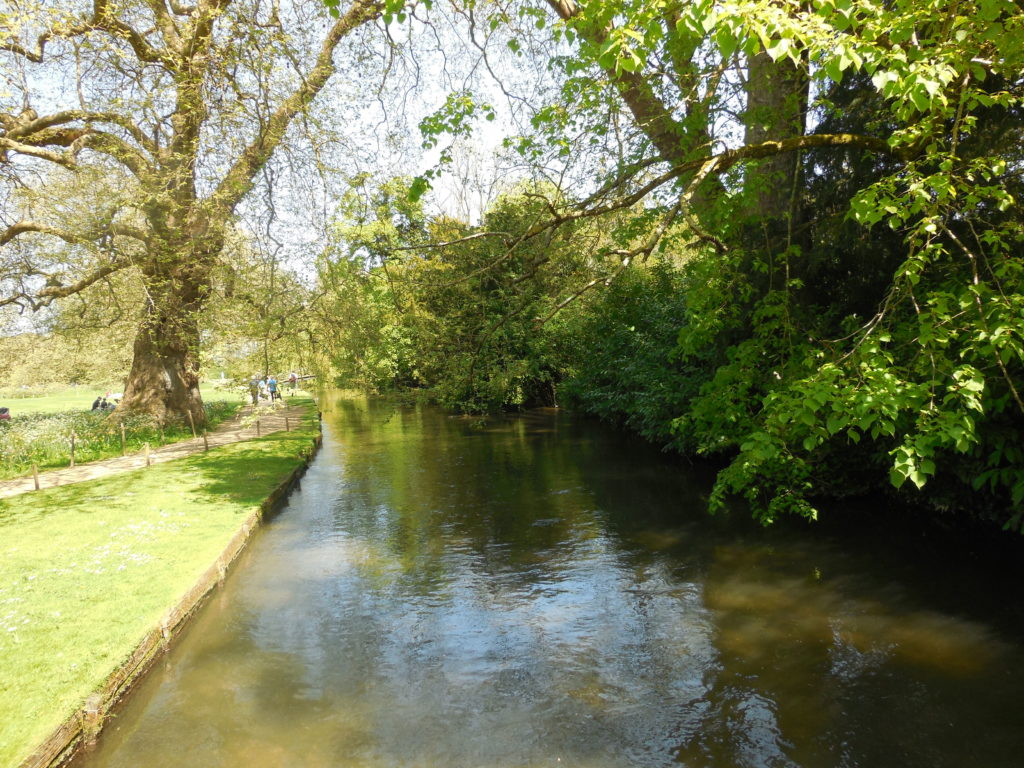
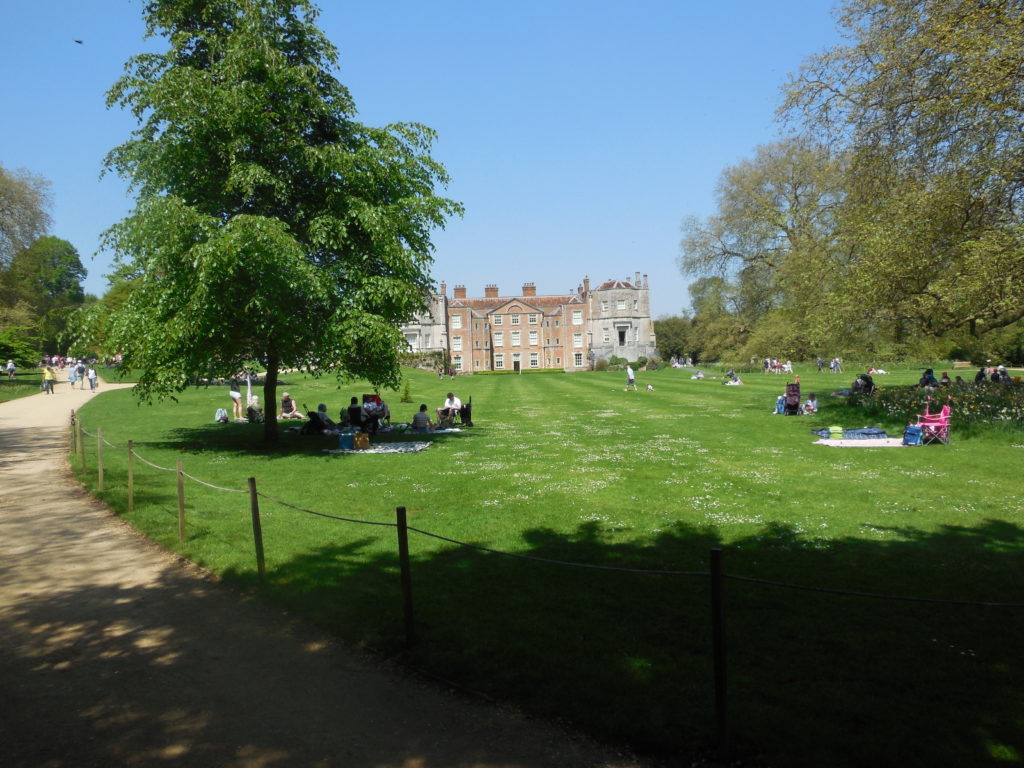
Would you like to experience travel in England first-hand?
Visit our website for a list of upcoming Number One London Tours.